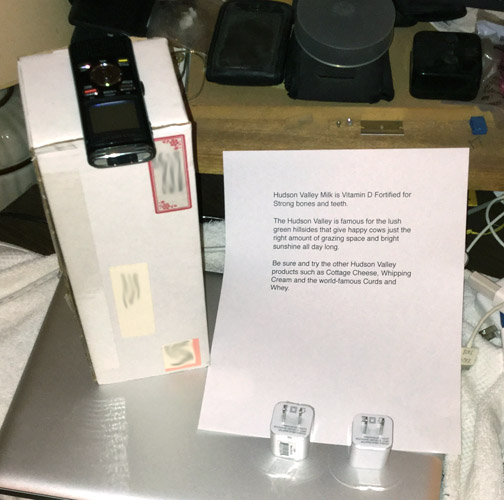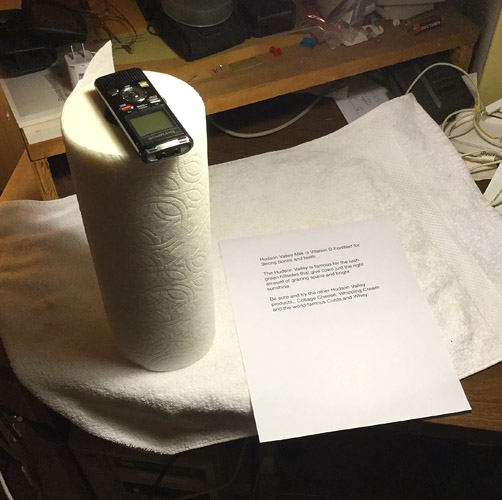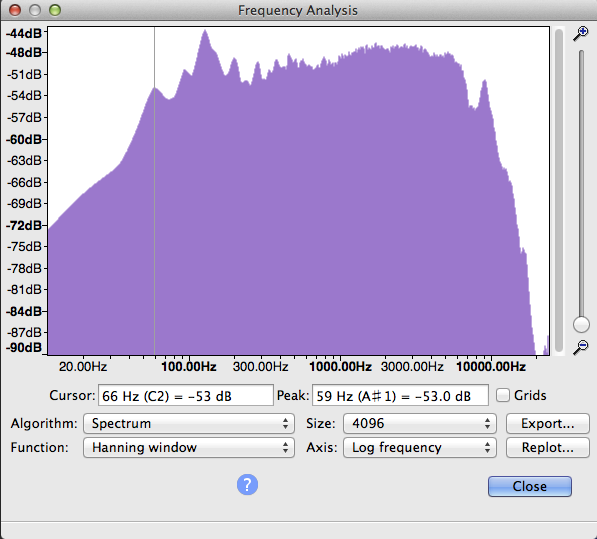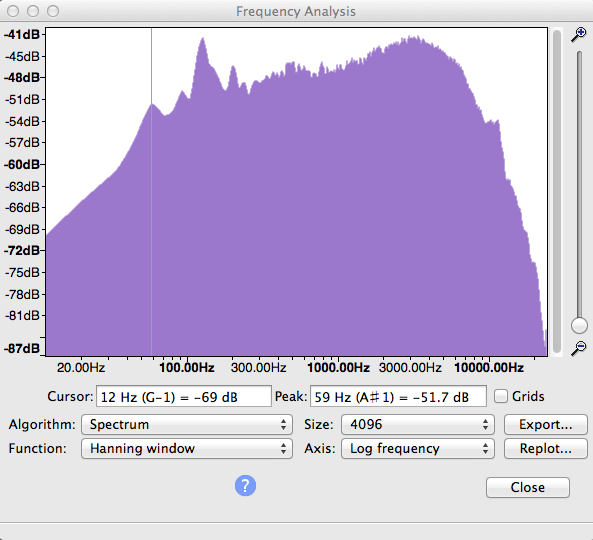I enjoyed the video.
I think I’ll try and pick up a zoom on ebay.
I enjoyed the video.
I think I’ll try and pick up a zoom on ebay.
You do have to predict the future. The H4 can accept an XLR microphone in its base, but the H1 can’t. Sift through the feature set and make sure it matches what you want to do. Also Google “complaints.” Reviews are nice, but I go for the complaints. Those are not likely to be written by the maker or the supplier.
Koz
Good point about the future, I confess I wasn’t really taking that into account.
I know what you mean about checking out negative reviews, even when they are genuine reviewers, many buyers appear to jump like lemmings over the " Great product - delivered ahead of time" cliff especially on Amazon. This after owning it for a mere week or two.
Particularly if the “reviews” appear to be copy and pastes of each other.
“Never has the sound world been so excited about the introduction…”
There is one possible problem with negative reviews. You need to weed out the ones written by somebody attempting to use the product or service wrong.
“The H64 recorder did not make me irresistible to my dates or result in world peace. -1.”
I refer to one review of a small sound mixer who pointed out its inability to properly accept high-end, phantom-powered microphones. The promotional words cleverly danced around that problem. It wasn’t the first review, either.
Koz
that sounds like a pretty sweet setup. i like the flexibility it provides. how much did it cost you to set it up?
Any Blue Spark USB Mic tends to do the trick for me.
I started doing voice overs for the books I write. I bought a Scarlett Solo 2nd gen setup that came with an AT2020 condenser mic. From what I understand, condenser mics are generally preferred for voice overs, but I’m thinking about getting a dynamic cardoid mic shure SM58-CN or sm57 since I don’t have a soundproof booth and I’m getting a lot of background noise. I can clean it up in post production, but I want to do as little processing as possible. Has anyone used the SM58-CN or for voice overs? I’ve read several articles online and some people say it works fine for the most part. What do you think? I don’t drop $100 for a mic I won’t end up using. Thanks
I don’t have a soundproof booth and I’m getting a lot of background noise. I can clean it up in post production, but I want to do as little processing as possible.
I did change my mind over the centuries. By far the most valuable thing I have is a soundproof third bedroom. Patrick, the kid who lived here two families ago played drums. Probably in self-defense, the family soundproofed the small third bedroom. It’s got carpeting on the floor and all five surfaces have thick Home Store sound tiles.
I can make any microphone work.

That’s an Olympus recorder with the ability to straight record—no processing, and it will save a WAV file.
I’m not a performer, but that sounds exactly like me (breaths and all).
It passes ACX Check with very gentle noise reduction (6dB) and Mastering Suite 4. I have since duplicated the effort with a roll of paper towels instead of a cardboard box with the idea that everybody has access to paper towels. Not everyone has access to a cardboard box and the paper is acoustically superior.

I don’t agree that a condenser microphone is the automatic first choice, particularly if you have a ratty environment. Crisp, clear condenser microphones don’t survive heavy processing particularly well. They get harsh, sharp and strident making yet even more processing necessary. Count the number of times “De-Essing” comes up in posts. That happens when your “S” sounds will cut through wood and fog your glasses. That can either happen or get worse with stiff noise reduction.
This is where performances split. That’s all you need to read for audiobooks. There is no balky computer interface or fan noise. The computer is in another room turned off.
I’m eventually going to bow to convention and include a tablet instead of printing the script on paper.
If you’re performing music, then you’ll need the microphone, interface, computer, headphones etc. That’s overdubbing. You’re stuck.
I need to try this trick with the Zoom. I have an H4 (no “n”).
I still have dwindling but still alive hope for the iPhone, in which case nobody would need to buy anything. I haven’t hit the right spells yet. It seems people do this all the time.

So my idea is set up as simple as possible and when the shekels start to roll in, then think about upgrading to different microphones and techniques. You can choose any new microphone you want because you don’t have to struggle with the room.
The longest message on the forum was Ian trying to record paid voice work from his noisy apartment in Hollywood. 39 forum chapters and about a year. He eventually got it to work; he’s a paid performer. How long do you have?
ACX wants you to maintain consistency through one publication. A stand-alone recorder lets you crank out work while you’re struggling to get your Yeti to run.
Koz
Has anyone used the SM58-CN or for voice overs? I’ve read several articles online and some people say it works fine for the most part
I’m having trouble finding an SM58-CN. Is that the version with the on-off switch? I know what an SM58 is. That’s a rock band microphone.
So borrow one from a rock band. If you’re one of those people struggling through equalization, filtering and De-Essing with your current microphone, this will be the sun coming up. “Professional, Studio” condenser microphones and noisy rooms don’t mix.
Koz
Most of these units (except the iPhone) are stereo. Theory has it if I straight mix down stereo to mono for a voice track, it should decrease the noise. The show is coming from one place, my voice, but the noise is coming from two different microphones. So it should give me … square root of the doobly-doo…about 3dB less FFFFFFFF noise without doing anything else.
We like free noise reduction.
Koz
I won’t use a new mic on the book I’m currently producing. I’ve done so many damn retakes… Koz, so you’re saying the sm58 would make my life a lot easier when it comes to recording with the sm58 or other dynamic mic and still sound good? (as good as I can produce anyway)
I’ve done so many damn retakes…
Because…?
I would never make this work because I have a flat, featureless voice and I write in sentences longer than I can [gasp] breathe.
I’m saying it should be possible to borrow or rent one before you pop for the $100 and shipping.
There’s another directions, too. I have a GLS Audio, ES-58 (no switch).
https://www.amazon.com/GLS-Audio-Vocal-Microphone-ES-58-S/dp/B000RKVH0K
As near as I could tell, It’s a good knockoff for the Shure Brothers. I actually did a hot comparison and I should still have it here somewhere. I remember one difference is slightly higher volume than the SM58.
Koz
The more I learn about post processing and the more I improve my performance the more obsessive I get with getting it perfect. It was mouth noises before. Now I’ve figured out how to avoid or clean out most all of those. This is my first attempt at recording, so it’s been a lot of trial and error. This knockoff mic looks like a good deal to try out a dynamic mic. Read a good blog on it. Thanks!
the more obsessive I get with getting it perfect.
There comes a time when you have to shoot the engineer and finish the show.
Koz
Found it.
It’s an uncompressed stereo WAV with a real Shure SM58 on the left and the GLS knock-off on the right. They’re mounted next to each other on a mic stand.
Pull it down, open in Audacity. Use the drop-down menu on the left > Split to Mono. That will give you two independent tracks that you can MUTE and SOLO to listen to one at a time. Near as I could tell, the only difference was slightly higher volume on the GLS. I don’t think the volume difference was the mixer any more. I think the microphone just is slightly hotter.
http://www.kozco.com/tech/audacity/clips/Shure-GLS-MicTest20121217-cut.wav
It’s cut down from the original because the original had some accidental overload damage.
The fake white noise is me crumpling a sheet of New York Times. That works remarkably well to test lumps and bumps in the tonal response system in the absence of a real noise generator and calibrated room. In this case, since the room sucked, the goal is to just compare them.
Koz
That’s what I thought. There’s no significant difference between them except for about a 3dB volume bump for the GLS. I couldn’t find any significant difference in real life, either.


Koz
Read a good blog on it
Post the blog. Remember this isn’t a help desk, it’s a forum with users sharing.
Koz
Zoom F3 with 32-bit float recording. Audacity has been 32-bit float internally for year (forever?). All other features aside (portability, phantom power, etc.), if someone just wants help dealing with clipping and gain by recording 32-bit float, is there any benefit to using a recorder instead of Audacity, especially if I’m already happy using Audacity?
Thanks!
is there any benefit to using a recorder instead of Audacity
There can be enormous benefits to using a stand-alone recorder. Somewhere between a quarter and a third of all forum postings have to do with forcing the computer to record a voice—and it doesn’t want to go.
A brief sampling:
The echo in your headphones is normal.
Make sure Skype or Zoom isn’t messing with your sound quality.
Make sure Windows isn’t trying to help you with effects and filters.
Make sure you’re not using External, USB, Network, or Cloud Drives.
If you can tell your computer is on just by listening, you’re doomed.
… and etc.
There are some not-obvious benefits. When you copy your work over to Audacity for editing, you have an automatic, perfect-quality backup of the original performance. There is no: “Oh my goodness, the computer failed and destroyed the only copy of my reading.”
I always max out the memory in my machines.
20GB memory is good for 31 hours of continuous, perfect-quality stereo WAV recording. If you have a mono microphone it doubles. That’s over 7-1/2 8-hour days with a mono microphone.
Use the wall-wart power supply and you won’t need to keep buying batteries—but you could.
If you have your computer running so you like it, then stay that way. Just remember that if it’s a general purpose computer, eventually you’re going to run a separate job that’s going to interfere with your production. Zoom is a favorite.
Koz
if someone just wants help dealing with clipping and gain by recording 32-bit float
32-float is not a gift from the angels. Plain 16-bit has a volume range of 96dB. That’s awfully close to the natural volume range of a microphone preamplifier. 20dB up and 76dB down. If you set your microphone wrong during the performance, 32-float will let you listen to perfect, crystal clear overload distortion or amplfier thermal noise. (fffffffffffff)
I know someone is making a stand-alone lavalier recorder with two preamps. That will give you enormous volume range with little or no fuss.
Koz